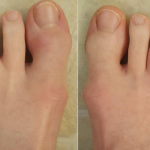Psoriatic arthritis (PsA), a disease characterized by inflammatory arthritis, enthesitis, dactylitis and spondylitis in patients with psoriasis, is remarkably diverse in presentation and course. To assist the clinician in the management of PsA, the Group for Research and Assessment of Psoriasis and Psoriatic Arthritis (GRAPPA), a global association of more than 500 rheumatologists, dermatologists and patient research partners, previously (in 2009) published treatment recommendations based on a systematic evidence review published in 2006. To maintain clinical relevance, such recommendations must be dynamic, requiring reevaluation and appropriate modification over time. In PsA, significant recent developments in pathophysiology and disease assessment, particularly regarding the important contribution of comorbidities coupled with major therapeutic advances, necessitated an update of the GRAPPA recommendations. For example, several new compounds had been approved since the 2006 literature review, and further evidence on existing therapies has accumulated.
The authors present overarching principles and updated treatment recommendations for the key manifestations of PsA. The recommendations were developed to provide up-to-date systematic and evidence-based guidance for the treatment and management of PsA in adults. The recommendations are not specifically relevant for patients with juvenile idiopathic arthritis or psoriasis only. The target audience for these GRAPPA recommendations is anyone involved in the treatment of patients with PsA.
Six overarching principles for the care of patients with PsA were developed after extensive feedback. There was ≥80% agreement among GRAPPA members who responded to the survey (135 healthcare providers and 10 patient research partners) for all of these principles, within both the group of healthcare providers and the group of patient research partners. These principles include the following:
- The ultimate goals of therapy for all patients with PsA are: 1) To achieve the lowest possible level of disease activity in all domains of disease; as definitions of remission and low or minimal disease activity become accepted, these will be included in the goal. 2) To optimize functional status, improve quality of life and well-being, and prevent structural damage to the greatest extent possible. 3) To avoid or minimize complications, both from untreated active disease and from therapy.
- Assessment of patients with PsA requires consideration of all major disease domains, including peripheral arthritis, axial disease, enthesitis, dactylitis, psoriasis, and nail disease. The impact of disease on pain, function, quality of life, and structural damage should be examined. In addition, activity in other potential related conditions should be considered. Multidisciplinary and multispecialty assessment and management will be most beneficial for individual patients.
- A comprehensive assessment of relevant comorbidities (including but not restricted to obesity, metabolic syndrome, gout, diabetes, cardiovascular disease, liver disease, depression and anxiety) should be undertaken and documented.
- Therapeutic decisions need to be individualized and are made jointly by the patient and his or her doctor.
- Ideally, patients should be reviewed promptly, offered regular evaluation by appropriate specialists and have treatment adjusted as needed in order to achieve the goals of therapy. Early diagnosis and treatment are likely to be of benefit.
The recommendations for PsA therapies by disease domain are summarized in the table below.


